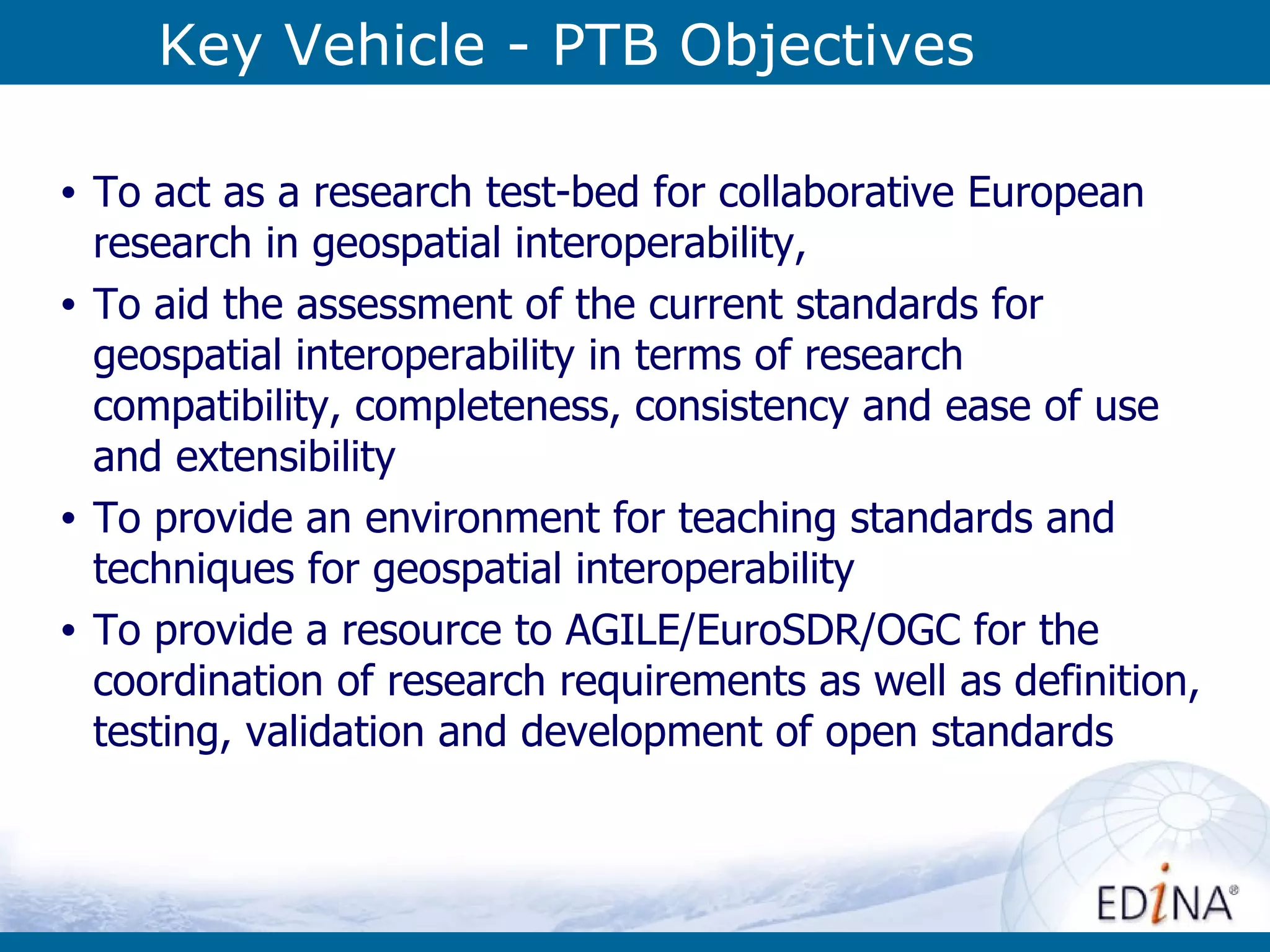The document discusses the OG interoperability experiments and the Shibboleth authentication framework utilized in a pre-conference workshop focusing on geospatial interoperability in Utrecht, Netherlands. It highlights EDINA's role in facilitating access management for academic users to secure and compliant services, emphasizing the importance of federated access control in enabling organizations to exchange authentication securely. The outcomes of these experiments suggest practical methods for employing Shibboleth in protecting web services without significant modifications to existing systems, aiming to enhance cooperation between the academic and public sectors in geospatial data access.
![OGC Interoperability Experiments & Authentication Association GI Laboratories Europe (AGILE) pre-conference work shop. Testbed research: Testing Geospatial and Services/Persistent Testbed, Utrecht, The Netherlands, 18 th April, 2011. [email_address] EDINA National Data Centre, University of Edinburgh](https://image.slidesharecdn.com/ogc-interoperability-experiments-and-authentication-110519034340-phpapp01/75/OGC-Interoperability-Experiments-and-Authentication-1-2048.jpg)


















